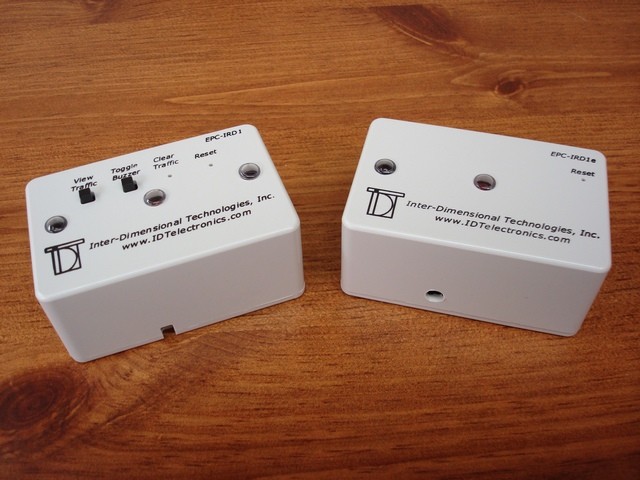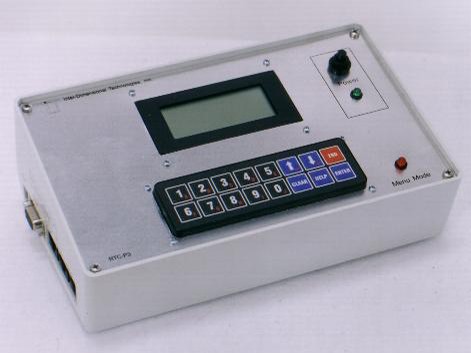

People Counters for Government Buildings and other Public Buildings
Before the recession that really took hold in 2008, almost all of our customers were retailers. However, since then, we have seen a steady increase of inquiries and sales from other types of public buildings and public establishments. These public buildings include government office buildings, courthouses, museums and highway rest stops, just to name a few.
Since there is such a variety of public buildings that can use our people counters, it would be best to discuss each of our people counters so that you can determine which would best suit your needs.
EPC-MAG1 Electronic People Counter:
The EPC-MAG1 uses a magnetic sensor to sense and count how many times a door opens. Depending on the purpose of the public building, this may or may not be a good choice, which we will explain here. An important concept to understand is that because this system inherently counts groups because it senses and counts door openings. Why is that? If a group of friends enter, they will typically hold the door open for each other and all enter on one door swing. That’s why the system inherently counts groups, and not individuals.
With that being said, the first thing that is required in order to use the EPC-MAG1 is a physical door that swings or slides open. The door cannot be propped open either. This means that this would not work on mall entrances or garage door entrances, where a gate or door swings up and stays up all day.
Also, if you have a situation where multiple people, such as friends, or a parent with children, enter to pay a bill at a government office, then the EPC-MAG1 may suit your needs. This is because you would probably only want to increment the count by a factor of one if a parent and children come in to pay a bill or handle some other sort of business. Alternatively, if the public building is a museum, for example, that museum will probably want to count each person, not just groups. In this case, we would not recommend the EPC-MAG1 for museums or any public or government buildings that require each person to be counted.
The EPC-MAG1 keeps one single running total and does not connect to a PC. It cannot determine direction that a person is passing, so you would divide the traffic in half if the people will enter and exit through the same door.
If you like the general features of the EPC-MAG1, but wish you could sense and count each person, then the EPC-IRD1 Electronic People Counter may just be what you’re looking for. We talk about that model next.
EPC-IRD1 Electronic People Counter:
The EPC-IRD1 (and optional EPC-IRD1E Infrared Emitter) is very similar to the EPC-MAG1, except that the EPC-IRD1 uses an infrared beam to sense the motion of people. This difference is very important to understand. It is important to understand because it determines how the system senses activity.
Unlike with the EPC-MAG1, the door(s) can be propped open when using the EPC-IRD1, or there can even be no door at all. Also, if you need to count each person that passes through the entrance, but you do not need to accumulate hourly traffic totals, then the EPC-IRD1 Electronic People Counter may suit your needs.
Examples of when you may need to count each and every person might be people entering courthouses, museums or cafeterias.
Please note that if you are not sure if you want to increment the count by a factor of one for a group, or if you want to count every person in a group, you can use the EPC-IRD1 system. That is because the EPC-IRD1 has a menu option that we call the Sensor Sensitivity Delay, which allows you to tell the system how you want to count groups of people.
Now that we talked about the EPC-MAG1 and the EPC-IRD1, you may be asking yourself if there’s a system that breaks the data down into more detail, instead of just a single total. The answer to that is, yes. To that end, we’ll talk about our RTC-P3 next.
RTC-P3 Electronic People Counter:
Like the EPC-IRD1, the RTC-P3 uses an infrared beam to sense the motion of individual people. Here are some features of the RTC-P3 that the EPC-IRD1 and EPC-MAG1 do not have:
• Saves the data in the 24 hourly increments.
• Transmits the data to a PC and includes our Graphing and Transmission software.
• Can determine direction. Therefore, there’s no need to divide the count in half.
• Can connect up to three door sensors. Therefore, there’s no need to purchase multiple RTC-P3 systems if you have multiple entrances.
• Since the RTC-P3 can transmit directly to a PC, the process of collecting the traffic data can be taken out of the hands of the employees, eliminating errors.
Like our EPC-IRD1, the RTC-P3 Electronic People Counter has the Sensor Sensitivity Delay menu option that tells the system if you want to count groups of individual people.
With this all being said, the RTC-P3 system can be used in environments where you would like to save the data in the hourly increments, transmit it to a PC or have multiple entrances to monitor.
Recommended Products for Government & Public Buildings




